前言
这个专题只用来总结binary tree的recursive 做法。
recursive的做法,看似代码简洁,实则要考虑的方面有很多。通常设计一个recusive的做法,需要考虑到以下三个步骤:
- 递归的终止条件 (base condition):要考虑什么时候停止递归
- 递归的递推公式 (recursion formula):要考虑递推的是什么,怎么进入下一层递归
- 递归的返回值 (return value):要考虑返回的是什么,是什么类型,是什么值
基础题目
↓点击题目就可以直接跳转到leetcode题目页面↓
104. Maximum Depth of Binary Tree
test cases:

Input: root = [3,9,20,null,null,15,7]
Output: 3
Input: root = [1,null,2]
Output: 2我们先想一个不那么精致的解法,考虑到所有的情况:
def maxDepth(self, root: Optional[TreeNode]) -> int:
if not root: # base condition
return 0
if not root.left and not root.right: # base condition
return 1
if not root.left: # recursion formula
return 1 + self.maxDepth(root.right)
if not root.right: # recursion formula
return 1 + self.maxDepth(root.left)
# recursion formula and return value
return max(self.maxDepth(root.left), self.maxDepth(root.right)) + 1为什么说这个解法不够精致呢,因为他有可以合并的地方,比如中间这三个条件,可以合并成一个条件。原因就是因为这三个条件的base condition都是一样的,所以可以合并成一个条件:
if not root.left and not root.right: # base condition
return 1
if not root.left: # recursion formula
return 1 + self.maxDepth(root.right)
if not root.right: # recursion formula
return 1 + self.maxDepth(root.left)这样就可以得到一个更精致的解法:
def maxDepth(self, root: Optional[TreeNode]) -> int:
if root == None: return 0
leftMax = self.maxDepth(root.left)
rightMax = self.maxDepth(root.right)
return max(leftMax, rightMax) + 1复杂度分析:
- 时间复杂度:O(N),N是树的节点数
- 空间复杂度:O(N), 最坏情况下,树是完全不平衡的,递归会调用N次(树的高度)
111. Minimum Depth of Binary Tree
test cases:
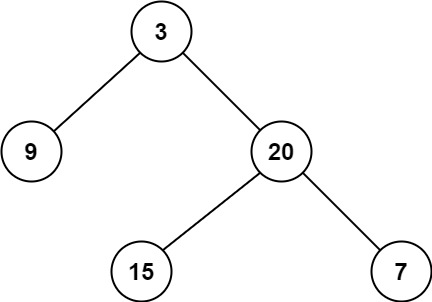
Input: root = [3,9,20,null,null,15,7]
Output: 2
Input: root = [2,null,3,null,4,null,5,null,6]
Output: 5这道题和前面的题目不同的是,这道题需要考虑更多的情况,假如一个节点只有一个左子树或者右子树,那么要使用max来计算深度,而不是min。所以这道题的递归公式要考虑的情况更多:
def minDepth(self, root):
if not root:
return 0
if None in [root.left, root.right]:
return max(self.minDepth(root.left), self.minDepth(root.right)) + 1
else:
return min(self.minDepth(root.left), self.minDepth(root.right)) + 1复杂度分析:
- 时间复杂度:O(N),N是树的节点数,考虑到最坏情况下,树是完全不平衡的,递归会调用N次(树的高度)
- 空间复杂度:O(N), 与时间复杂度相同
100. Same Tree
test cases:

Input: p = [1,2,3], q = [1,2,3]
Output: true
Input: p = [1,2], q = [1,null,2]
Output: false同样,这道题需要考虑的情况也比较多,因为要判断两个树是否相同,需要考虑的情况就有:
- 两个树都是空树
- 有一个树是空树
- 两个树都不是空树,但是根节点的值不同
- 两个树都不是空树,根节点的值相同
所以这道题的递归公式要考虑的情况得出的代码就是
def isSameTree(self, p: Optional[TreeNode], q: Optional[TreeNode]) -> bool:
if not p and not q: # base condition 1
return True
if not p or not q: # base condition 2
return False
if p.val != q.val: # base condition 3
return False
# recursion formula
return self.isSameTree(p.left, q.left) and self.isSameTree(p.right, q.right)复杂度分析:
- 时间复杂度:O(N),N是树的节点数,考虑到最坏情况下,树是完全不平衡的,递归会调用N次(树的高度)
- 空间复杂度:O(N), 与时间复杂度相同
101. Symmetric Tree
test cases:
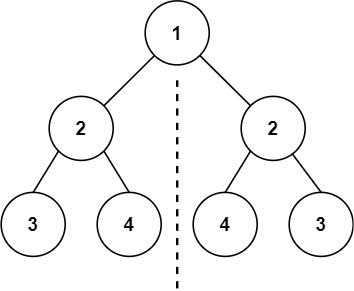
Input: root = [1,2,2,3,4,4,3]
Output: true
Input: root = [1,2,2,null,3,null,3]
Output: false这道题和上一道题的思路是一样的,也是需要考虑的情况比较多,不过要注意的是,这道题的递归公式是不一样的,因为这道题是判断两个树是否对称,所以需要使用一个子函数来递归判断对称条件:
- 两个树都是空树
- 有一个树是空树
- 两个树都不是空树,但是根节点的值不同
- 左边的树的左子树和右边的树的右子树不对称
所以这道题的递归公式要考虑的情况得出的代码就是
def isSymmetric(self, root: Optional[TreeNode]) -> bool:
def _is_sym(left, right):
if not left and not right:
return True
if not left and right:
return False
if not right and left:
return False
if left.val != right.val:
return False
left_res = _is_sym(left.left, right.right)
right_res = _is_sym(left.right, right.left)
return left_res and right_res
if not root:
return True
return _is_sym(root.left, root.right)复杂度分析:
- 时间复杂度:O(N),N是树的节点数,考虑到最坏情况下,树是完全不平衡的,递归会调用N次(树的高度)
- 空间复杂度:O(N), 与时间复杂度相同
226. Invert Binary Tree
test cases:

Input: root = [4,2,7,1,3,6,9]
Output: [4,7,2,9,6,3,1]
Input: root = [2,1,3]
Output: [2,3,1]这道题只需要在原先的树上进行修改,不过要注意的是,这里的替换需要使用一个临时变量来存储,不然会出现错误。或者使用python的特性,直接交换两个变量的值:
def invertTree(self, root: Optional[TreeNode]) -> Optional[TreeNode]:
if not root:
return
root.left, root.right = self.invertTree(root.right), self.invertTree(root.left)
return root复杂度分析:
- 时间复杂度:O(N),N是树的节点数,考虑到最坏情况下,树是完全不平衡的,递归会调用N次(树的高度)
- 空间复杂度:O(N), 与时间复杂度相同
110. Balanced Binary Tree
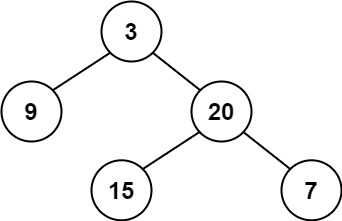
Input: root = [3,9,20,null,null,15,7]
Output: true
Input: root = [1,2,2,3,3,null,null,4,4]
Output: false
Input: root = []
Output: true这道题的思路是,如果当前节点是叶子节点,那么返回当前节点的值,如果不是叶子节点,那么返回左子树或者右子树的和加上当前节点的值。
def isBalanced(self, root: Optional[TreeNode]) -> bool:
if not root:
return True
def dfs(root):
if not root:
return 0
left = dfs(root.left)
right = dfs(root.right)
if left == -1 or right == -1 or abs(left - right) > 1:
return -1
return max(left, right) + 1
return dfs(root) != -1复杂度分析:
- 时间复杂度:O(N),N是树的节点数,考虑到最坏情况下,树是完全不平衡的,递归会调用N次(树的高度)
- 空间复杂度:O(N), 与时间复杂度相同,原因是递归调用栈的空间
高级类型题
114. Flatten Binary Tree to Linked List
test cases:
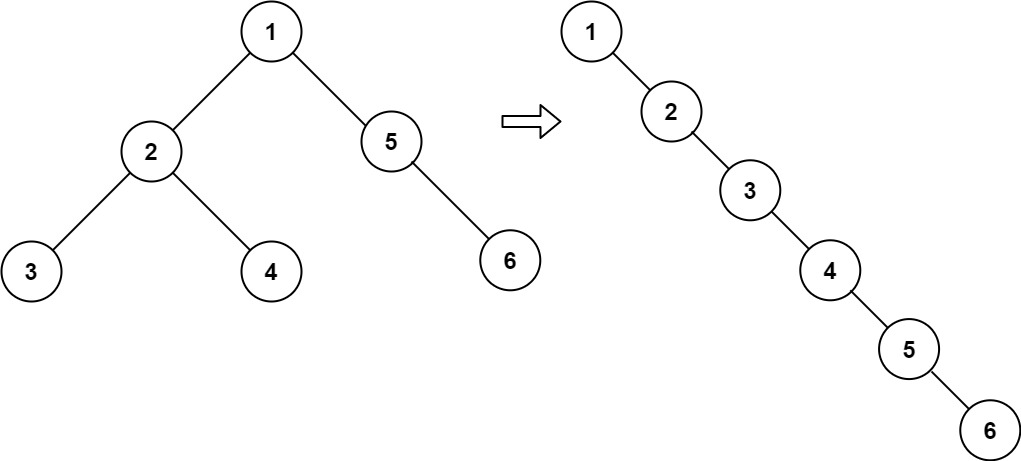
Input: root = [1,2,5,3,4,null,6]
Output: [1,null,2,null,3,null,4,null,5,null,6]
Input: root = []
Output: []这道题的思路是,先把左子树flatten,然后把右子树flatten,然后把左子树放到右子树的位置,然后把原来的右子树放到左子树的最右边的节点的右子树的位置。
def flatten(self, root: Optional[TreeNode]) -> None:
"""
Do not return anything, modify root in-place instead.
"""
if not root:
return None
self.flatten(root.left)
self.flatten(root.right)
left = root.left
right = root.right
root.left = None
root.right = left
p = root
while p.right:
p = p.right
p.right = right复杂度分析:
- 时间复杂度:O(N),N是树的节点数,考虑到最坏情况下,树是完全不平衡的,递归会调用N次(树的高度)
- 空间复杂度:O(N), 与时间复杂度相同,原因是递归调用栈的空间
116. Populating Next Right Pointers in Each Node
test cases:

Input: root = [1,2,3,4,5,6,7]
Output: [1,#,2,3,#,4,5,6,7,#]
Input: root = []
Output: []这道题的思路是,先把左子树的next指针指向右子树,然后把右子树的next指针指向父节点的next的左子树,然后递归的处理左子树和右子树。
def connect(self, root: 'Node') -> 'Node':
if not root:
return None
if root.left:
root.left.next = root.right
if root.next:
root.right.next = root.next.left
self.connect(root.left)
self.connect(root.right)
return root复杂度分析:
- 时间复杂度:O(N),N是树的节点数,考虑到最坏情况下,树是完全不平衡的,递归会调用N次(树的高度)
- 空间复杂度:O(N), 与时间复杂度相同,原因是递归调用栈的空间
117. Populating Next Right Pointers in Each Node II
test cases:
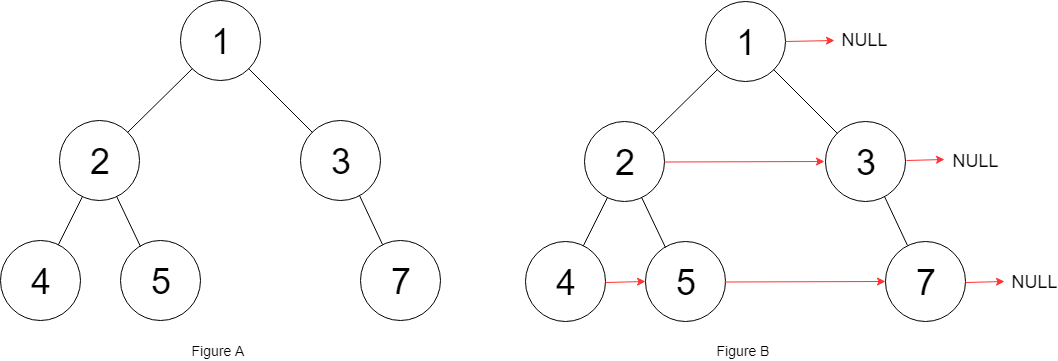
Input: root = [1,2,3,4,5,null,7]
Output: [1,#,2,3,#,4,5,7,#]
Input: root = []
Output: []这道题和上面的题的思路是一样的,只不过这道题的树不是完全二叉树,所以需要判断一下左子树和右子树是否存在。
def connect(self, root: 'Node') -> 'Node':
if not root:
return None
if root.left:
if root.right:
root.left.next = root.right
else:
p = root.next
while p:
if p.left:
root.left.next = p.left
break
elif p.right:
root.left.next = p.right
break
p = p.next
if root.right:
p = root.next
while p:
if p.left:
root.right.next = p.left
break
elif p.right:
root.right.next = p.right
break
p = p.next
self.connect(root.right)
self.connect(root.left)
return root复杂度分析:
- 时间复杂度:O(N),N是树的节点数,考虑到最坏情况下,树是完全不平衡的,递归会调用N次(树的高度)
- 空间复杂度:O(N), 与时间复杂度相同,原因是递归调用栈的空间
297. Serialize and Deserialize Binary Tree
test cases:
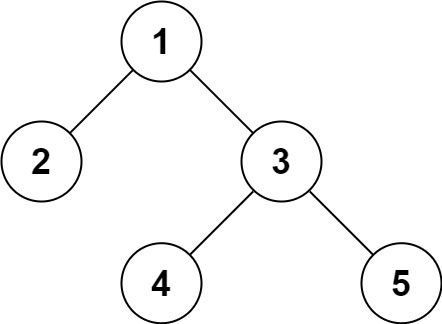
Input: root = [1,2,3,null,null,4,5]
Output: [1,2,3,null,null,4,5]
Input: root = []
Output: []这道题的思路是,先序遍历树,然后把遍历的结果保存到一个数组中,然后再把这个数组转换成字符串,然后再把这个字符串转换成数组,然后再把这个数组转换成树。
def serialize(self, root: Optional[TreeNode]) -> str:
if not root:
return ""
res = []
def preorder(root):
if not root:
res.append("null")
return
res.append(str(root.val))
preorder(root.left)
preorder(root.right)
preorder(root)
return ",".join(res)
def deserialize(self, data: str) -> Optional[TreeNode]:
if not data:
return None
data = data.split(",")
def buildTree(data):
if not data:
return None
val = data.pop(0)
if val == "null":
return None
root = TreeNode(int(val))
root.left = buildTree(data)
root.right = buildTree(data)
return root
return buildTree(data)复杂度分析:
- 时间复杂度:O(N),N是树的节点数,考虑到最坏情况下,树是完全不平衡的,递归会调用N次(树的高度)
- 空间复杂度:O(N), 与时间复杂度相同,原因是递归调用栈的空间
110. Balanced Binary Tree
test cases:

Input: root = [3,9,20,null,null,15,7]
Output: true
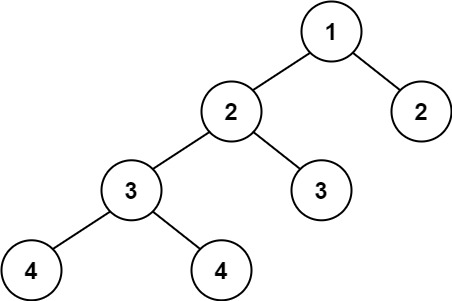
Input: root = [1,2,2,3,3,null,null,4,4]
Output: false
这道题的思路是,先序遍历树,然后把遍历的结果保存到一个数组中,然后再把这个数组转换成字符串,然后再把这个字符串转换成数组,然后再把这个数组转换成树。
def isBalanced(self, root: Optional[TreeNode]) -> bool:
def height(root):
if not root:
return 0
return max(height(root.left), height(root.right)) + 1
if not root:
return True
return abs(height(root.left) - height(root.right)) <= 1 and self.isBalanced(root.left) and self.isBalanced(root.right)复杂度分析:
- 时间复杂度:O(N^2),N是树的节点数,考虑到最坏情况下,树是完全不平衡的,递归会调用N次(树的高度)
- 空间复杂度:O(N), 与时间复杂度相同,原因是递归调用栈的空间
236. Lowest Common Ancestor of a Binary Tree
test cases:

Input: root = [3,5,1,6,2,0,8,null,null,7,4], p = 5, q = 1
Output: 3
Explanation: The LCA of nodes 5 and 1 is 3.
Input: root = [3,5,1,6,2,0,8,null,null,7,4], p = 5, q = 4
Output: 5
Explanation: The LCA of nodes 5 and 4 is 5, since a node can be a descendant of itself according to the LCA definition.这道题的思路是,先序遍历树,然后把遍历的结果保存到一个数组中,然后再把这个数组转换成字符串,然后再把这个字符串转换成数组,然后再把这个数组转换成树。
def lowestCommonAncestor(self, root: 'TreeNode', p: 'TreeNode', q: 'TreeNode') -> 'TreeNode':
if not root or root == p or root == q:
return root
left = self.lowestCommonAncestor(root.left, p, q)
right = self.lowestCommonAncestor(root.right, p, q)
if left and right:
return root
return left if left else right复杂度分析:
- 时间复杂度:O(N),N是树的节点数,考虑到最坏情况下,树是完全不平衡的,递归会调用N次(树的高度)
- 空间复杂度:O(N), 与时间复杂度相同,原因是递归调用栈的空间
前序遍历,中序遍历,后序遍历类型题
首先我们来复习一下前序遍历,中序遍历,后序遍历的定义:
- 前序遍历:根节点 -> 左子树 -> 右子树
- 中序遍历:左子树 -> 根节点 -> 右子树
- 后序遍历:左子树 -> 右子树 -> 根节点
举一个例子来说就是:
1
/ \
2 3
/ \ / \
4 5 6 7- 前序遍历:1 2 4 5 3 6 7
- 中序遍历:4 2 5 1 6 3 7
- 后序遍历:4 5 2 6 7 3 1
那么我们来看一下这道题:
105. Construct Binary Tree from Preorder and Inorder Traversal
test cases:

Input: preorder = [3,9,20,15,7], inorder = [9,3,15,20,7]
Output: [3,9,20,null,null,15,7]
Input: preorder = [-1], inorder = [-1]
Output: [-1]这道题的重点,就是关注preorder 前序遍历的第一个元素,就是根节点,然后在inorder 中找到这个根节点,然后就可以确定左子树和右子树的范围了,然后就可以递归的构建树了。
def buildTree(self, preorder: List[int], inorder: List[int]) -> Optional[TreeNode]:
if not preorder or not inorder:
return None
index = inorder.index(preorder.pop(0))
root = TreeNode(inorder[index])
root.left = self.buildTree(preorder, inorder[:index])
root.right = self.buildTree(preorder, inorder[index+1:])
return root复杂度分析:
- 时间复杂度:O(N),N是树的节点数,考虑到最坏情况下,树是完全不平衡的,递归会调用N次(树的高度)
- 空间复杂度:O(N), 与时间复杂度相同
106. Construct Binary Tree from Inorder and Postorder Traversal
test cases:

Input: inorder = [9,3,15,20,7], postorder = [9,15,7,20,3]
Output: [3,9,20,null,null,15,7]
Input: inorder = [-1], postorder = [-1]
Output: [-1]这道题和上一道题的思路是一样的,只不过这道题的根节点是postorder的最后一个元素,然后在inorder中找到这个根节点,然后就可以确定左子树和右子树的范围了,然后就可以递归的构建树了。
# 1. 普通做法
def buildTree(self, inorder: List[int], postorder: List[int]) -> Optional[TreeNode]:
if not inorder or not postorder:
return None
index = inorder.index(postorder.pop())
root = TreeNode(inorder[index])
root.right = self.buildTree(inorder[index+1:], postorder)
root.left = self.buildTree(inorder[:index], postorder)
return root
# 2. 做法二: 优化空间复杂度
def buildTree(self, inorder: List[int], postorder: List[int]) -> Optional[TreeNode]:
map_inorder = {}
for i, val in enumerate(inorder): map_inorder[val] = i
def recur(low, high):
if low > high: return None
x = TreeNode(postorder.pop())
mid = map_inorder[x.val]
x.right = recur(mid+1, high)
x.left = recur(low, mid-1)
return x
return recur(0, len(inorder)-1)复杂度分析:
- 时间复杂度:O(N),N是树的节点数,考虑到最坏情况下,树是完全不平衡的,递归会调用N次(树的高度)
- 空间复杂度:O(N), 与时间复杂度相同
889. Construct Binary Tree from Preorder and Postorder Traversal
test cases:

Input: pre = [1,2,4,5,3,6,7], post = [4,5,2,6,7,3,1]
Output: [1,2,3,4,5,6,7]这道题和上面两道题的思路是一样的,只不过这道题的根节点是preorder的第一个元素,然后在postorder中找到这个根节点,然后就可以确定左子树和右子树的范围了,然后就可以递归的构建树了。
def constructFromPrePost(self, pre: List[int], post: List[int]) -> Optional[TreeNode]:
if not pre or not post:
return None
root = TreeNode(pre.pop(0))
if len(pre) == 0:
return root
index = post.index(pre[0])
root.left = self.constructFromPrePost(pre[:index+1], post[:index+1])
root.right = self.constructFromPrePost(pre[index+1:], post[index+1:-1])
return root复杂度分析:
- 时间复杂度:O(N),N是树的节点数,考虑到最坏情况下,树是完全不平衡的,递归会调用N次(树的高度)
- 空间复杂度:O(N), 与时间复杂度相同
Sum 类型题
112. Path Sum
test cases:

Input: root = [5,4,8,11,null,13,4,7,2,null,null,null,1], targetSum = 22
Output: true
Input: root = [1,2,3], targetSum = 5
Output: false
Input: root = [1,2], targetSum = 0
Output: false这道题的思路是,如果当前节点是叶子节点,那么判断当前节点的值是否等于targetSum,如果不是叶子节点,那么判断左子树或者右子树是否存在路径和等于targetSum减去当前节点的值。
def hasPathSum(self, root: Optional[TreeNode], targetSum: int) -> bool:
if not root:
return False
if not root.left and not root.right:
return root.val == targetSum
return self.hasPathSum(root.left, targetSum - root.val) or self.hasPathSum(root.right, targetSum - root.val)复杂度分析:
- 时间复杂度:O(N),N是树的节点数,考虑到最坏情况下,树是完全不平衡的,递归会调用N次(树的高度)
- 空间复杂度:O(N), 与时间复杂度相同,原因是递归调用栈的空间
113. Path Sum II
test cases:
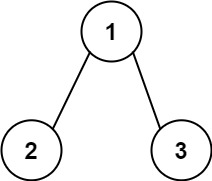
Input: root = [5,4,8,11,null,13,4,7,2,null,null,5,1], targetSum = 22
Output: [[5,4,11,2],[5,8,4,5]]
Input: root = [1,2,3], targetSum = 5
Output: []
Input: root = [1,2], targetSum = 0
Output: []这道题的思路是,如果当前节点是叶子节点,那么判断当前节点的值是否等于targetSum,如果不是叶子节点,那么判断左子树或者右子树是否存在路径和等于targetSum减去当前节点的值,如果存在,那么把当前节点的值加入到路径中。
def pathSum(self, root: Optional[TreeNode], targetSum: int) -> List[List[int]]:
if not root:
return []
res = []
def dfs(root, targetSum, path):
if not root:
return
if not root.left and not root.right:
if root.val == targetSum:
res.append(path + [root.val])
return
dfs(root.left, targetSum - root.val, path + [root.val])
dfs(root.right, targetSum - root.val, path + [root.val])
dfs(root, targetSum, [])
return res复杂度分析:
- 时间复杂度:O(N),N是树的节点数,考虑到最坏情况下,树是完全不平衡的,递归会调用N次(树的高度)
- 空间复杂度:O(N), 与时间复杂度相同,原因是递归调用栈的空间
437. Path Sum III
test cases:

Input: root = [10,5,-3,3,2,null,11,3,-2,null,1], targetSum = 8
Output: 3
Input: root = [5,4,8,11,null,13,4,7,2,null,null,5,1], targetSum = 22
Output: 3这道题的思路是,如果当前节点是叶子节点,那么判断当前节点的值是否等于targetSum,如果不是叶子节点,那么判断左子树或者右子树是否存在路径和等于targetSum减去当前节点的值,如果存在,那么把当前节点的值加入到路径中。
def pathSum(self, root: Optional[TreeNode], targetSum: int) -> int:
if not root:
return 0
def dfs(root, targetSum):
if not root:
return 0
res = 0
if root.val == targetSum:
res += 1
res += dfs(root.left, targetSum - root.val)
res += dfs(root.right, targetSum - root.val)
return res
return dfs(root, targetSum) + self.pathSum(root.left, targetSum) + self.pathSum(root.right, targetSum)复杂度分析:
- 时间复杂度:O(N^2),N是树的节点数,考虑到最坏情况下,树是完全不平衡的,递归会调用N次(树的高度),每次调用都需要遍历整棵树
- 空间复杂度:O(N), 与时间复杂度相同,原因是递归调用栈的空间
666. Path Sum IV
未完待续
129. Sum Root to Leaf Numbers
test cases:

Input: root = [4,9,0,5,1]
Output: 1026
Explanation:
The root-to-leaf path 4->9->5 represents the number 495.
The root-to-leaf path 4->9->1 represents the number 491.
The root-to-leaf path 4->0 represents the number 40.
Therefore, sum = 495 + 491 + 40 = 1026.
Input: root = [1,2,3]
Output: 25
Explanation:
The root-to-leaf path 1->2 represents the number 12.
The root-to-leaf path 1->3 represents the number 13.
Therefore, sum = 12 + 13 = 25.这道题的思路是,如果当前节点是叶子节点,那么返回当前节点的值,如果不是叶子节点,那么返回左子树或者右子树的和加上当前节点的值。
def sumNumbers(self, root: Optional[TreeNode]) -> int:
if not root:
return 0
def dfs(root, path):
if not root:
return 0
if not root.left and not root.right:
return path * 10 + root.val
return dfs(root.left, path * 10 + root.val) + dfs(root.right, path * 10 + root.val)
return dfs(root, 0)复杂度分析:
- 时间复杂度:O(N),N是树的节点数,考虑到最坏情况下,树是完全不平衡的,递归会调用N次(树的高度)
- 空间复杂度:O(N), 与时间复杂度相同,原因是递归调用栈的空间
124. Binary Tree Maximum Path Sum
test cases:
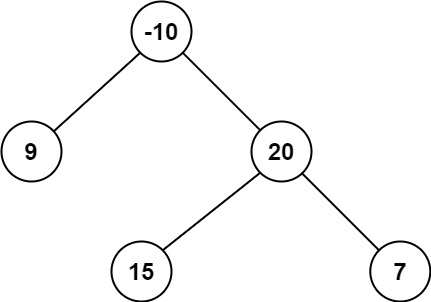
Input: root = [-10,9,20,null,null,15,7]
Output: 42
Explanation: The optimal path is 15 -> 20 -> 7 with a path sum of 15 + 20 + 7 = 42.
Input: root = [1,2,3]
Output: 6
Explanation: The optimal path is 2 -> 1 -> 3 with a path sum of 2 + 1 + 3 = 6.这道题的思路是,如果当前节点是叶子节点,那么返回当前节点的值,如果不是叶子节点,那么返回左子树或者右子树的和加上当前节点的值。
def maxPathSum(self, root: Optional[TreeNode]) -> int:
if not root:
return 0
self.res = float('-inf')
def dfs(root):
if not root:
return 0
left = max(0, dfs(root.left))
right = max(0, dfs(root.right))
self.res = max(self.res, left + right + root.val)
return max(left, right) + root.val
dfs(root)
return self.res复杂度分析:
- 时间复杂度:O(N),N是树的节点数,考虑到最坏情况下,树是完全不平衡的,递归会调用N次(树的高度)
- 空间复杂度:O(N), 与时间复杂度相同,原因是递归调用栈的空间
222. Count Complete Tree Nodes
test cases:

Input: root = [1,2,3,4,5,6]
Output: 6
Input: root = []
Output: 0
Input: root = [1]
Output: 1这道题的思路是,如果当前节点是叶子节点,那么返回当前节点的值,如果不是叶子节点,那么返回左子树或者右子树的和加上当前节点的值。
def countNodes(self, root: Optional[TreeNode]) -> int:
if not root:
return 0
def dfs(root):
if not root:
return 0
left = dfs(root.left)
right = dfs(root.right)
return left + right + 1
return dfs(root)复杂度分析:
- 时间复杂度:O(N),N是树的节点数,考虑到最坏情况下,树是完全不平衡的,递归会调用N次(树的高度)
- 空间复杂度:O(N), 与时间复杂度相同,原因是递归调用栈的空间








Comments NOTHING